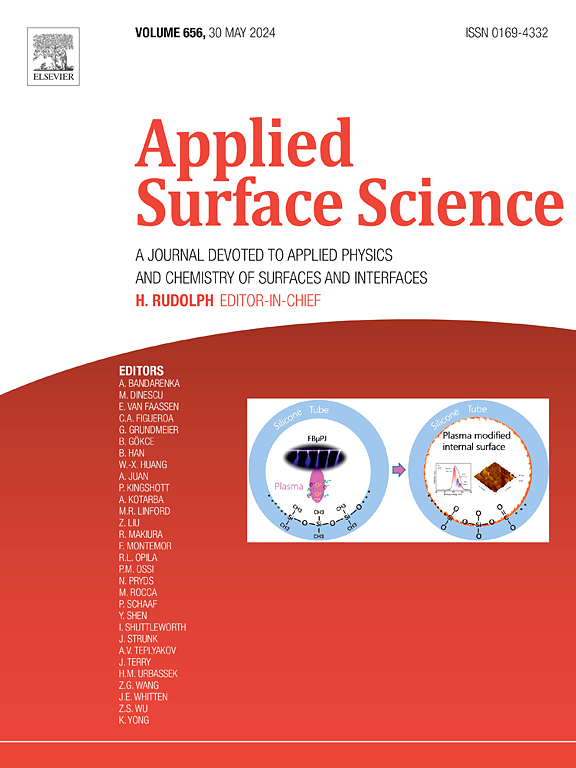Isotropic performance of surface acoustic wave resonators based on ε-Ga2O3(001) thin films
IF 6.3
2区 材料科学
Q2 CHEMISTRY, PHYSICAL
引用次数: 0
Abstract
Epsilon-phase gallium oxide (ε-Ga2O3) thin film is an emerging piezoelectric semiconductor for the application in RF resonators. Compared with traditional thin films such as AlN (d33≈5 pm/V), ε-Ga2O3 possesses a high piezoelectric coefficient (d33≈11 pm/V). As a material belonging to the orthorhombic crystal system, ε-Ga2O3 is theoretically expected to exhibit anisotropic properties on the (001) plane. However, in this study, a comprehensive investigation on the angular dependence of surface acoustic wave (SAW) propagation properties reveals that the ε-Ga2O3(001) plane is actually highly isotropic. Measurements of electrostatic, mechanical, and thermomechanical characteristics along different in-plane directions on ε-Ga2O3(001) present standard deviation smaller than 3 %. The dielectric constant of ε-Ga2O3 is extracted to be 11.7 ± 0.1 by the capacitance measurement. Phase velocity and the temperature coefficient of frequency (TCF) for ε-Ga2O3 SAW resonators are determined to be 3169 ± 4 m/s and −58.9 ± 1.7 ppm/°C for Rayleigh mode, while it is 5319 ± 11 m/s and −58.9 ± 1.2 ppm/°C for Sezawa mode. The abnormal isotropy of the orthorhombic ε-Ga2O3 is explained by the existence of triple rotational domains. The results provide critical basic parameters for the future development and application in ε-Ga2O3-based SAW devices.

基于ε-Ga2O3(001)薄膜表面声波谐振器的各向同性性能
ε相氧化镓(ε-Ga2O3)薄膜是一种新兴的用于射频谐振器的压电半导体材料。与AlN (d33≈5 pm/V)等传统薄膜相比,ε-Ga2O3具有较高的压电系数(d33≈11 pm/V)。作为正交晶系材料,ε-Ga2O3在(001)平面上表现出各向异性。然而,在本研究中,对表面声波(SAW)传播特性的角依赖性的综合研究表明,ε-Ga2O3(001)面实际上是高度各向同性的。在ε-Ga2O3(001)上沿不同面内方向测量的静电、力学和热力学特性的标准差小于3 %。通过电容测量得到ε-Ga2O3的介电常数为11.7 ± 0.1。相速度和频率温度系数(TCF)ε-Ga2O3谐振器被确定为3169年 ± 4 m / s, 58.9− ±1.7 ppm /°C为瑞利模式,虽然5319年 ± 11 m / s, 58.9− ±1.2 ppm /°C Sezawa模式。正交型ε-Ga2O3的反常各向同性可以用三转动畴的存在来解释。研究结果为ε- ga2o3基SAW器件的未来发展和应用提供了关键的基础参数。
本文章由计算机程序翻译,如有差异,请以英文原文为准。
求助全文
约1分钟内获得全文
求助全文
来源期刊

Applied Surface Science
工程技术-材料科学:膜
CiteScore
12.50
自引率
7.50%
发文量
3393
审稿时长
67 days
期刊介绍:
Applied Surface Science covers topics contributing to a better understanding of surfaces, interfaces, nanostructures and their applications. The journal is concerned with scientific research on the atomic and molecular level of material properties determined with specific surface analytical techniques and/or computational methods, as well as the processing of such structures.
 求助内容:
求助内容: 应助结果提醒方式:
应助结果提醒方式:


